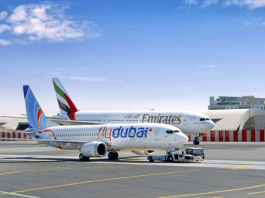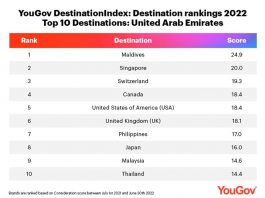2015 Regional Results
Europe (+5%) led growth in absolute and relative terms supported by a weaker euro vis-à-vis the US dollar and other main currencies. Arrivals reached 609 million, or 29 million more than in 2014. Central and Eastern Europe (+6%) rebounded from last year’s decrease in arrivals. Northern Europe (+6%), Southern Mediterranean Europe (+5%) and Western Europe (+4%) also recorded sound results, especially considering the many mature destinations they comprise.
Asia and the Pacific (+5%) recorded 13 million more international tourist arrivals last year to reach 277 million, with uneven results across destinations. Oceania (+7%) and South-East Asia (+5%) led growth, while South Asia and in North-East Asia recorded an increase of 4%.
International tourist arrivals in the Americas (+5%) grew 9 million to reach 191 million, consolidating the strong results of 2014. The appreciation of the US dollar stimulated outbound travel from the United States, benefiting the Caribbean and Central America, both recording 7% growth. Results in South America and North America (both at +4%) were close to the average.
International tourist arrivals in the Middle East grew by an estimated 3% to a total of 54 million, consolidating the recovery initiated in 2014.
Limited available data for Africa points to a 3% decrease in international arrivals, reaching a total of 53 million. In North Africa arrivals declined by 8% and in Sub-Saharan Africa by 1%, though the latter returned to positive growth in the second half of the year. (Results for both Africa and Middle East should be read with caution as it is based on limited available data)
China, the USA and the UK lead outbound travel growth in 2015
A few leading source markets have driven tourism expenditure in 2015 supported by a strong currency and economy.
Among the world’s top source markets, China, with double-digit growth in expenditure every year since 2004, continues to lead global outbound travel, benefitting Asian destinations such as Japan and Thailand, as well as the United States and various European destinations.
By contrast, expenditure from the previously very dynamic source markets of the Russian Federation and Brazil declined significantly, reflecting the economic constraints in both countries and the depreciation of the rouble and the real against virtually all other currencies.
As for the traditional advanced economy source markets, expenditure from the United States (+9%), the world’s second largest source market, and the United Kingdom (+6%) was boosted by a strong currency and rebounding economy. Spending from Germany, Italy and Australia grew at a slower rate (all at +2%), while demand from Canada and France was rather weak.













